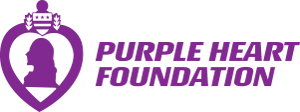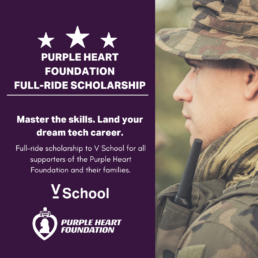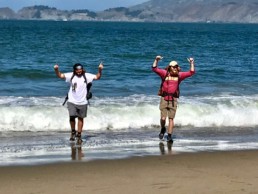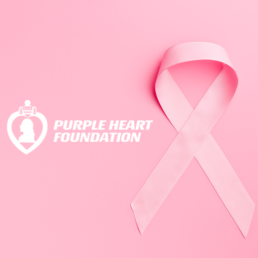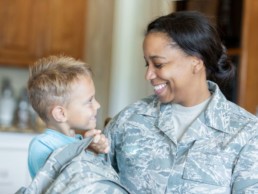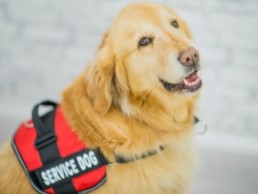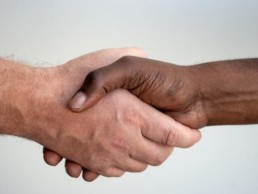Donation: Charitable PayRaise
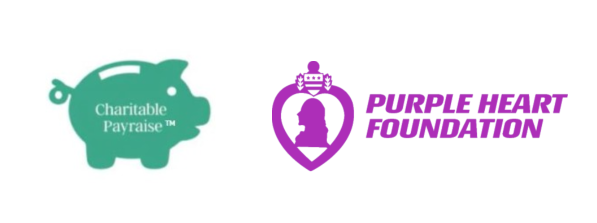
With great excitement, we would like to officially announce the strategic partnership between The Purple Heart Foundation and The Charitable Payraise®, in time for Purple Heart Day. For over 65 years, The Purple Heart Foundation has helped fund programs and services to help veterans transition to civilian life.
The Charitable Payraise® helps facilitate a planned gift and a legacy-defining bequest. The strategic partnership with The Charitable Payraise® will allow veterans, donors, and the broader community to review their retirement and giving plans to maximize their after-tax cash flow and increase their impact.
Download the brochure to learn more.
“As the son of a son of Marine Officers, it is our honor to partner with The Purple Heart Foundation to serve those who have so honorably served us. Our mission is to expand the opportunities to give to this noble cause while helping donors improve their own retirements. We hope you will inquire about this ‘Win-Win’ opportunity,” said Bill Lloyd when describing why the partnership means so much to him personally.
One of the giving options with The Purple Heart Foundation is through bequests. If you have a highly appreciated asset, such as land, stock, etc., The Charitable Payraise® can assess if your retirement cash flow and giving can be increased. They work with your financial advisor as part of the assessment. The Charitable Payraise team has created a new financial method, and with their patented approach and financial app, it is easy to see if adding them to your financial planning makes sense.
You can learn more on Charitable Payraise’s How It Works Page about their approach and how we can help.
You can also learn more at www.charitablepayraise.com. Interested in enhancing the lives of veterans everywhere? Learn more about the amazing impacts you can make at www.purplehear2dev.wpengine.com.
Our Mission
The mission of the Purple Heart Service Foundation is to enhance the quality of life of Purple Heart recipients and other honorably discharged veterans and their families.
Purple Heart Foundation's Full-Ride V-School Scholarship
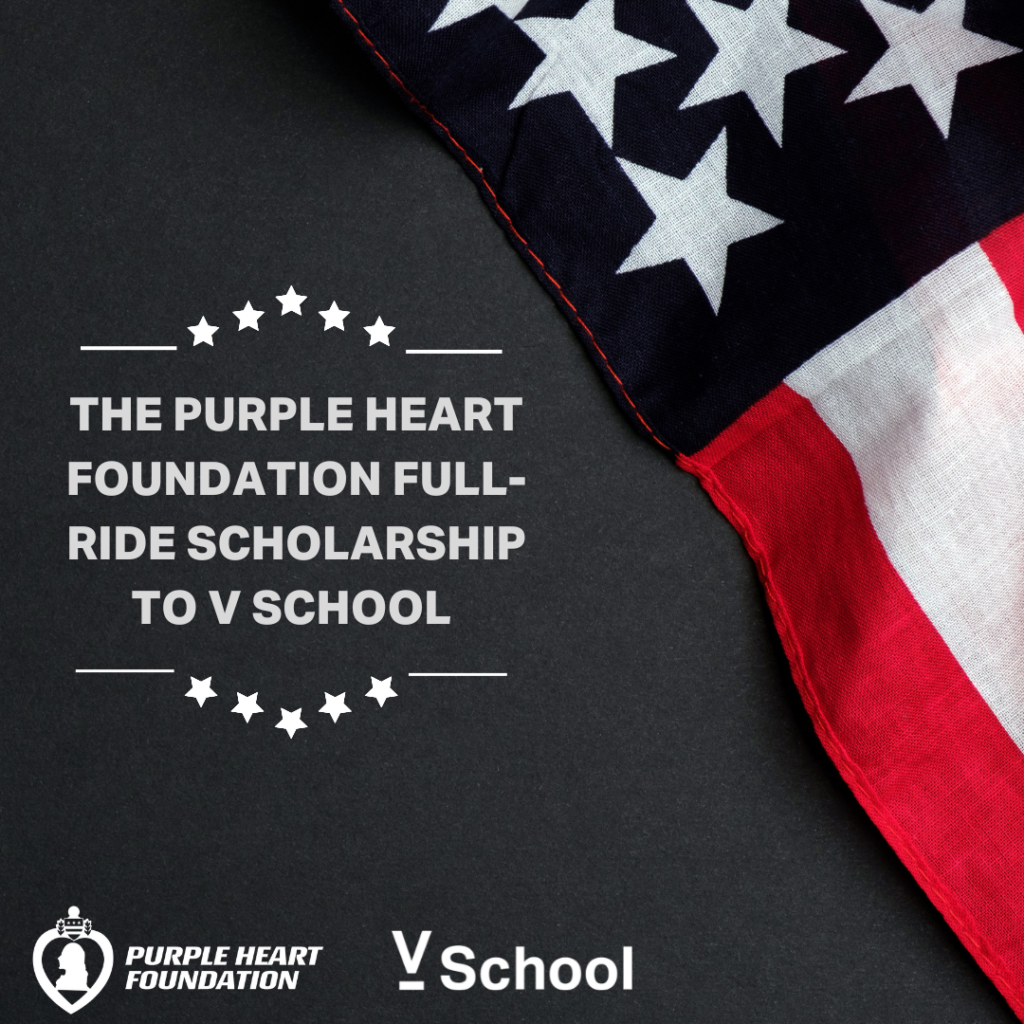
The Purple Heart Foundation is proud to announce the Full-Ride Scholarship to V School, an opportunity for Purple Heart Foundation supporters and their family members. We are committed to empowering our heroes and their loved ones, providing them with the tools and resources they need to thrive in the ever-evolving world of technology, design, and innovation. In addition to the Full-Ride Scholarship, we are also offering $2,000 partial scholarships to further support our community.
Some of the things you should note are:
- There is a Full-Ride and Partial Scholarships: Apply for either 100% tuition coverage or one of the many $2,000 partial scholarships, ensuring financial support for your education.
2. Flexible Learning Options: Choose from full-time and part-time online programs, tailored to fit your unique schedule and learning preferences.
3. Comprehensive Curriculum: Master in-demand skills in fields such as web development, cybersecurity and UX/UI design.
4. Career Support: Gain access to V School's extensive network of industry partners, career coaches, and alumni, who will help you navigate the job market and secure a rewarding career.
We encourage you to take advantage of this opportunity to transform your future and make a lasting impact in the tech industry. Apply for the Purple Hearts Foundation Full-Ride Scholarship or one of the $2,000 partial scholarships to V School today! Don't miss this opportunity to transform your future and make a lasting impact in the tech industry. Apply for the Purple Hearts Foundation Full-Ride Scholarship or one of the $2,000 partial scholarships to V School today!
APPLY HERE
A Look Back At Their Walk Across America
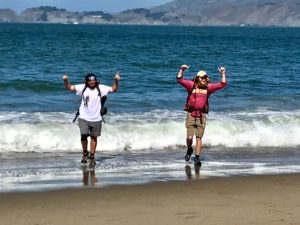
Back in 2018, two friends, Matt Andersen & Trevor Stephens, began their journey, a “Walk Across America,” that would take a little over 6 months to raise awareness and money for a charity of their choosing. They chose that they would be walking for the Purple Heart Foundation in May 2018. They showed the power of what two people can do for the veteran community. Matt and Trevor were able to raise over $8,000 for the Purple Heart Foundation during their walk. We caught up with them to talk more in-depth about their “Walk Across America” and what they have been up to.
Thank you gentleman for taking some time to sit down and talk with us to catch up.
(Matt & Trevor): Thanks for having us. We are happy to be here talking with our friends from the Purple Heart Foundation.
Trevor, you are a veteran. How do you look back on your days on active duty?
(Trevor): Kinda like the walk, at the time it was a tough and frustrating time, and there was a lot of bad but looking back it was some of the best times of my life. It impacted me in a way that got me out of trouble. I truly believed it helped me in life in different ways.
I have a friend actually who was helped by the Purple Heart Foundation with a grant around the time we began the walk. He is doing much better and is walking with a cane. He regained most of walking with a cane. He can’t work but still does therapy and lives in North Carolina. He has a good mental mindset, he still makes jokes and has a good attitude.
Does your status as a veteran prompt you to talk about issues like veteran suicides?
(Trevor): It is important because I know a few people in connections that know others that have committed suicide. When you are in the military you know how big of a deal it is. Going through tough situations sometimes you break. There is a lot of stress so it's important to let everyone know about what is going on with our veterans.
You two are good friends from Council Bluffs, IA, but how did the walk Across America get started?
(Matt): In 2007 we met each other in middle school in Iowa. In High school we became closer friends through mutual friendships. It was Trevor's idea to do it. The road trip was scheduled after I graduated from college and Trevor came out of military duty. Trevor was watching videos of people walking long distances for music festivals in a show.
(Trevor): Going through a rabbit hole and seeing what others did to raise money for charity, I got the idea of walking across the country. I texted another friend if he wanted to walk across the country. I was not doing it by myself and texted Matt. At first he thought I was crazy. It took some convincing for Matt to finally get him to join the walk. We had brought up the idea of traveling before. Took him an hour to be set to want to do it, then 4th of July 2017 it was decided that we were going to do it.
"This is where it felt like it became bigger than us.”
It has been a little while since you did the Walk Across America, how did you both feel about doing it in the beginning? How do you feel about it now?
(Trevor): It was hard to believe that we actually did it in the end. I go back and rewatch the videos they made along the way. It was 7 months worth of videos on the road. I look back on it and it was one of the best things I have done in my life, along with joining the marine corps.
Are there any memories from the trip that stick out to you guys?
(Matt): From all kinds of people we met along the way. People took us in to have us as guests in their homes when they understood that we were supporting veterans and the Purple Heart Foundation. We met a man in Walcott, Iowa, stopped on the road when he saw us, went down the street, got food for us and came back. We ate the food in his truck. He gave us a signed book since he was a writer. I see a town somewhere and I remember and say wow I really walked through that place. People were always stopping to see us and ask what we were doing. And they loved the idea as soon as they found out and were supportive. One couple invited us to eat at a restaurant and let us stay in their home to sleep over. The Injuries we got as we walked were also memorable. Trevor's feet were hurting so bad. By the time we were in Indiana, Trevor had deep cuts in his feet and I had to find ways to help him.
This is where it felt like it became bigger than us. People said thank you and what we were doing mattered. We felt like we could not quit, it fueled us. It hit home for us. The people helping us the most and the biggest supporters all had a military connection, whether a veteran or a military family. They put us on The Chicago Tribune.
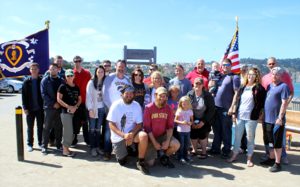
You mentioned how tough the walk was, were any states harder to walk?
(Trevor): Harder states were West Virginia by the Appalachian Mountains during the winter time. Utah was so hot I had some symptoms. I had a breakdown. Almost quit it but did not. We decided from Utah to Nevada we would walk before the sun came up.
I Lost three toenails during the walk. I wasn‘t paying attention to my body and there were days where I had heat exhaustion and dry heaving. In Nebraska, we went to see a memorial/statue and had a full body cramp. I had to get IV fluids at the VA hospital. I was still affected badly by the walk even though I was still one of the best hikers because of my experience. My Shoes were wearing out. I Had to be in a hotel for three days, had blisters, and could not walk at all. We believed our feet were gonna harden up.
How did you both feel when you finally made it to San Francisco, ending the walk?
(Trevor): Once we made it to Baker Beach, San Francisco, We definitely had mixed feelings. We were actually ahead of the scheduled timeline we made. Purple Heart Foundation had set up a little get together party for our family and friends to come to San Francisco and to celebrate with us. We couldn't believe that we made it. I remember Matt was looking over Alcatraz and taking videos of the view. That night we had a party and hung out with everyone and had a good time, walking near the ocean. We went to a bar and watched the Iowa vs Iowa State football game.
(Matt):We were so tired to comprehend that we made it. I Couldn't believe that we lived this lifestyle for such a long time and it was coming to an end. It took us 6 months and two weeks to walk across America. We started the walk on March 1st, 2018 and finished September 8th, 2018. 191 days and 3105 miles. We did not necessarily lose much weight because we were not eating the best foods while the trip occurred.
“The people helping us the most and the biggest supporters all had a military connection, whether a veteran or a military family.”
Would you do the Walk all over again?
(Matt): Now I think neither of us could handle it now. We have really thought about it for a couple of months, we want to drive through the entire trail in a car and try to see the people we met. I tell you the experience was worth it and the freedom of being outside.
We remember that you both had plans after this, we wanted to know how are you guys and what you have been up to?
(Matt): I Went to New York and became a technician and then went to paris. Staying in France for a little long but I’m thinking of coming to the U.S. but I am not sure of it. Bringing up the Walk Across America looking for a job actually has helped me in the job interviews.
(Trevor): I will be graduating soon and plan to find a job with the national parks service as a ranger.
Congratulations on your impending graduation. Is there anything you would like to share with anyone reading this?
(Both): Keep on going and help support the programs . The money is going to good places when you donate with the Purple Heart Foundation, and I remember how they helped my friends, they make sure that it goes to the right people in need of the help.
What Women Veterans Need To Know About Breast Cancer
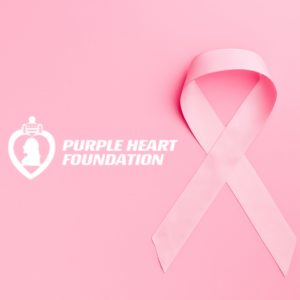
October is Breast Cancer Awareness Month! It is important to keep up to date with current events about the disease and get checked every so often by health professionals. Veterans, active service members, and our supporters should learn more about this problem that can be fatal to anyone. Studies show about 1 in 8 U.S women will develop breast cancer over the course of their lifetime1. Certain lifestyles bring a higher risk of getting cancer. Studies now show that if you’re a woman in the military, you are more likely to get breast cancer due to exposure to chemicals and radio emissions if your duties require you to work with either. Luckily, there are people who want to keep current and past service members aware of this and push for action to be able to get more accessible screenings while in the military. Purple Heart Foundation believes everyone should keep an eye on their health to prevent any illnesses such as Breast Cancer that can lead to death.
What Is Breast Cancer
It is important to understand at the basic level what breast cancer is and what to look out for. Breast cancer is a disease that occurs when changes take place in a person’s genes that control cell growth in the body. This mutation advances the multiplication of cells in your body with no control. When this mutation occurs in breast cells, it can form in different parts of the breast. This includes the fatty tissue, lobules, or ducts of the breast. Some symptoms of breast cancer include continuous pain in the breasts, redness of the skin on the breast, or rashes2. There are stages of breast cancer which define how big the tumor is and whether it is spreading. The stages are from 0-4. The evaluation by a doctor determines what stage the person is in. It is important to get checked and prevent cancer from spreading.
Service Members And Breast Cancer
Although both men and women can get breast cancer, it is more likely to occur in women. According to a study by the CDC, breast cancer is the second most common cancer in all women. The disease is estimated to be up to 40 percent higher in women veterans and service members than in the general population3. This is an alarming rate for women in uniform. Breast cancer for active-duty women is seven times higher compared to the average rate of fifteen other types of cancer for all service members4. One reason breast cancer affects service members and veterans is likely because of higher levels of stress, exposure to toxic chemicals from working industrial jobs, and other factors. Another reason is radio emissions, women that work as radio operators, electricians, and other jobs dealing with exposure to electromagnetic radiation are at a greater risk5. Veteran Kate Hendricks Thomas got a screening done at 38 years old and found out she had three different cancers. She says, “Now that I am a few years out, I tell everybody to get it checked. The enemy is lurking in our bodies6.” Doctors and women veterans are advocating for the younger demographic to get screened.
What Can Be Done?
The key is to be able to detect the disease as early as possible through regular health screenings and check-ups by health professionals. Early detection can lead to getting early treatment. You can also check for any abnormalities that may show up through a self examination. Currently in congress, there is action being taken to push access for military women to have wider access to mammograms. It is a proposal that would allow breast cancer screenings for women in the U.S. military. The good news is it has passed through the Senate this year. If the bill passes, The Department of Veterans Affairs will be required to screen women who have served in areas where there were burn pits. The bill is now in the U.S. House and up for consideration7. We are a step closer to ensuring veterans have preventative care to live long and healthy lives. This is a good step toward helping military servicewomen get the help they need, and deserve
The military community has a responsibility to help our women, active members, and veterans, because of their sacrifice for our country. They have put their bodies on the line, so we must assure that they get the help they need to live a long and healthy life.
_1 https://www.voice4vet.org/breast-cancer-your-va-rating/
_2 https://www.voice4vet.org/breast-cancer-your-va-rating/
_3 https://reporter.nih.gov/project-details/10009841
_4 https://cdmrp.health.mil/bcrp/pbks/bcrppbk2021.pdf
_5 https://www.usatoday.com/story/news/nation/2012/10/02/breast-cancer-troops/1608293 /
Many Veteran Women may be long overdue a Purple Heart Medal!
Women have only been active in the military for 70 years, but in each of those years they have joined in a significant amount, increasing every year. Compared to 1973, where enlistment of women soldiers was approximately 70,000, there are more than 200,000 women in active duty today serving in every branch of the U.S. military. Given the number of servicewomen, including having courage for being on the front lines and getting hurt, why do so few women actually receive their Purple Heart Medal? As you know, The Purple Heart is the only medal awarded to service members when they have greatly sacrificed themselves and have been injured in the line of duty. It has been known throughout history that men are usually the ones out fighting since the earliest wars. It is possible that the sheer number of men compared to women in the military today can still overshadow the many contributions that women have made. But that is unfair. With this in mind, we want to call attention to and highlight the disparities, share their stories, and acknowledge the contributions of our women vets. Based on the sheer quantity of women service members and no short supply of accomplishments and sacrifice, there should be more that have received the medal. All veterans deserve to be recognized for their sacrifices, especially from the physical, mental, and emotional scars that they will carry for the rest of their lives.
Women and the Purple Heart Medal
Women began to join the military in 1948, just three years after the end of World War II. President Harry S. Truman signed the Women’s Armed Services Integration Act into law, officially allowing women to serve as permanent members of all branches of the Armed Forces. Surprisingly, there have only been approximately 500 women that have been awarded the Purple Heart medal in the entire history of the military. There is no doubt that there are more women who are eligible for the award, but either they have not applied or have not been recognized. It is extremely important to recognize the sacrifice of their bodies and minds on the battlefield because each woman in active duty has given up some important qualities of their lives for our country, including time away from their families, losing physical abilities they once had, and losing their sanity . The medal is an example of the honor that the United States bestows upon them and all of our veterans deserve this respect.
Antoinette Scott’s Story
She was actually the first woman from Washington D.C. to have received the Purple Heart. She served eight years in the D.C Army National Guard and was deployed to Iraq in support of Operation Iraqi Freedom in 2003. She recalls the time her injuries happened during her mission driving a truck with soldiers to Baghdad Airport while being under attack. She managed to get the entire group to safety. She says, “There was so much going on, I didn’t have a chance to think about myself until I touched my face and I thought it was sweat and I saw blood. At that moment, I’m like, ‘Someone is bleeding,’ it wasn’t happening to me in my mind.” The truck was hit by an explosive device that led to shrapnel going through the left side of her face, breaking her jaw and a main blood vessel to her brain. She sustained life-threatening injuries, but the team she drove was able to evacuate her on time to save her life.
Marlene Rodriguez Story
She served three tours in Iraq before she had to retire and come back home. Marlene retired in 2009 due to experiencing two roadside bomb explosions and a firefight during her time in Iraq. She was diagnosed with traumatic brain injury (TBI) and Post-Traumatic Stress Disorder (PTSD), which left her disabled. She says, “I miss it so much. Just the structure, the discipline, the leadership,The honor.” As a result of her time in war, Marlene suffers from seizures, is unable to walk far due to back problems, and cannot express herself how she wants. Today, Marlene is frustrated with all the problems that will plague her for the rest of her life.
Conclusion
Antoinette and Marlene’s stories are just two stories of many in combat that still suffer from physical and mental injuries sustained in the battlefield. We salute and honor these two heroes, as well as countless others affected. What we are witnessing with these women is history in the making. Even today women can still become some of the first of 1,000 women to ever receive the medal, compared to more than 1 million men who have received it. These women throughout history have been soldiers, leaders and have sacrificed for the essential freedoms that we enjoy today. But unfortunately, most of them won’t receive a ticker tape parade, let alone the Purple Heart Medal. We want to encourage those who have not received the medal to apply if eligible. If you believe you know someone that does not have the medal and could be a candidate, recommend them to apply as it’s never too late to do so. Here is a website that shows the documents, resources, and examples of what needed to apply for the Purple Heart Medal.
Can We Talk About How Veteran Service Dogs Work Hard To Be More Than Just Man’s Best Friend?
Ever notice when you’re out at the gym, or the grocery store, or the train station,places you least expect to see an animal, you see a person walking with a dog? Well, your eyes aren’t deceiving you and these are not just any ordinary canines, they are actually incredibly trained service dogs. You likely won’t see the effects of what they do or how they help out their owner, but there is more to them than meets the eye. Service dogs assist veterans with different needs in a variety of ways and it is something that, as a veteran supporting community, we should talk about. They aren’t just there to keep company, but to help handlers with disabilities so that they can lead more independent lives.
The Best of the Best
Service dogs can help in the range of physical, sensory, psychiatric, intellectual, or even mental disabilities that a veteran can have. About 50% – 70% of dogs picked fail through service training. Dogs must be above average when it comes to their abilities, and this is only the very beginning of determining a worthy service dog. Service dogs in training must be able to exhibit a desire to work, a calm demeanor, high intelligence, and have a friendly and loving disposition. So, it takes more than a good nose to be a service dog.
Testimony
Veteran Toye Hickman is a service dog owner who shared her testimony about how her life has changed since she first got her service dog, as she deals with post-traumatic stress disorder, depression and anxiety. “He understands when my anxiety is going up. He’ll follow me around, he’ll pester me to get up and do something,” Hickman said. “If I’m having a down day, even though he’s a very active dog, he’ll lay right beside me and won’t leave my side.” Toye says her life changed when her service dog Bake entered it just two years ago.
Purple Heart Testimony / Clay the Service Dog
The Purple Heart Foundation believes that service dogs can truly help veterans, and that is why we offer this program to veterans. Watch retired veteran Jim Mirick, in his own words, detailing how much his service dog has helped him. He states, “He and I have such a bond together, he’s very tight with me, he’s irreplaceable to me.” Speaking of service dogs, our newest member to the Purple Heart Foundation family is Clay the service puppy, named after Purple Heart Recipient and former Purple Heart Foundation board member, Clayton Jones who passed in 2021. Clay is in the early stages of his nearly twenty four month training program, and from what we can tell he is determined and working hard through the process as a young student.
Conclusion
When the time comes, Clay will be matched with an honorably discharged veteran and their family, hopefully providing invaluable support while making a significant difference in a veterans’ life. Giving new meaning to the phrase Man’s best friend, our returning heroes, with their new companions, will be able to return towards the path of independence. Click here to learn more about our service dog program.
Did You Know About This Secret Handshake?
The Handoff
A secret handshake as you may know, typically belongs to secret clubs and organizations. Secret handshakes have developed over time, nowadays close friends, teachers and students, and athletes can be seen doing their own version of personal secret shake. These handshakes are a way to show that you are a part of a special or elite group, and that other people, well, are not. But there is one secret handshake that has been around a lot longer than your typical frat handshake, less ornate but with one very significant difference. Enter… the challenge coin.
Unless you are affiliated with the military or local law enforcement, you likely have never heard of this handshake. The reason you likely never heard of it is because of the way the coin is passed. A high ranking official walks up to a soldier and extends his hand to the soldier, they shake hands and just like that it's over! It's a quiet and discreet exchange, designed to not call attention. However, at that moment that soldier has just been honored for an important action they took in their field of duty or for their accomplishment of a mission. The unit commander just walks up and shakes their hand directly and places a small round object directly into their palm. But what does that mean?
What is a Challenge Coin?
Challenge coins are specially designed coins that are not necessarily meant to be traded. A challenge coin is a coin given to a member of a group to commemorate a moment in time. These coins are in remembrance of your time in the military. They are also used to reward or honor someone when they have achieved something remarkable. The challenge coin is of high personal value, and indeed it is a priceless thing to own. They are collectibles in which people are proud to show off in their offices or at home and each challenge coin houses a story for the person who possesses it.
Although you can find challenge coins primarily throughout military culture, that doesn’t mean you can’t find them anywhere else. Many organizations such as firefighters, local law enforcement, and even nonprofits utilize challenge coins as nod to the original uses. The Purple Heart Foundation has its own challenge coin usually given to the strongest supporters of its veteran services programs, we’ll talk about that at another time in another blog.
The tradition of challenge coins has been around for decades and even comes with its own set of rules. Stay tuned for the next blog where we dive deeper into the legacy of the challenge coin.
Could Golf Help Survivors Suffering from PTSD?
Did you know that when a service member goes through a traumatizing event, likely caused in battle, it can leave behind harrowing mental and emotional scars? What we now know as Post Traumatic Stress Disorder forms as a result and creates problems for our veterans, the most common symptoms are anxiety and depression. Because PTSD is an unseen condition where the symptoms can get worse and affect everyday life, many of our nation’s veterans must find a way to cope and deal with the stress of trauma related PTSD, by finding support. Surprisingly, one good way that helps veterans is through recreational therapy. More specifically, golf.
It’s been proven that a consistent physical regiment can help decrease the impact of PTSD over time. According to one study, “A 12-week exercise program that included three 30-minute resistance training sessions a week, as well as walking, was found to lead to a significant decrease in PTSD symptoms, depression, and better sleep quality after the program ended.”
It was very helpful to learn that veterans can treat PTSD by playing golf because it helps take their mind off things, it brings physical exercise from playing, and they can meet new peers while sharing 18 holes. Remember, golf is a lengthy game and full of competitiveness, making it easy to get distracted from your problems, thus acting like a therapy for PTSD.
For the past six years, many veterans have participated in a joint program with the Purple Heart Service Foundation and the local VA Hospital to participate in the 6th Annual Purple Heart Open as a part of their therapy. Vets take the opportunity to not only relieve stress, but also to talk with other veterans who can relate to their experiences . Matthew Levine, a retired U.S. Army Veteran, says “Golf has been a way to reduce stress and get back to normal.” Another veteran, Ed Afanador, says “It gives you a common ground if you’ve been injured, and you have someone to talk to that has that commonality between each other.”
As the weather is heating up, we hope more veterans will take the opportunity to get outside and get active. The Purple Heart Open may only come once a year, but the golf course will be open all summer long.
